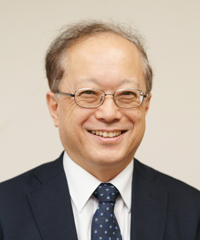Regarding the effectiveness of the COVID-19 vaccine and such side effects as anaphylaxis, there are surely many who have mixed feelings of anticipation and anxiety.
Here, I would like to relate my experience with COVID-19 vaccination and share some current information.
Let me start with personal experience, I have retired from my position at a university and currently continue as the director of the Child Research Net and a pediatrician specializing in the diagnosis and treatment of children with developmental disabilities. Most of the episodes involving children that I have introduced in this blog are based on my experience in this capacity.
As such, I am also still a practicing physician, and for this reason, I was received notification from the regional medical association regarding vaccination for COVID-19, and received the second dose the other day.
In Japan, nearly all vaccinations are administered by subcutaneous injection, but as you know, the COVID-19 vaccination is given by intramuscular injection. Since the needle enters vertically and goes deep, many people may feel uneasy thinking it may hurt, but I wasn't expecting any pain at all even before receiving the vaccination.
This was because I know that the nerve fibers sensitive to pain are concentrated in and throughout the skin. Within muscles, there is little nervous tissue to sense pain, and more nerves that sense the pressure of muscles contracting and stretching. As those who have received subcutaneous injections may know, in addition to a sharp sensation of pain when the needle penetrates the skin, the injection of medical solution is also rather painful because the injected medicine stimulates a great deal of pain-sensitive subcutaneous tissue. On the other hand, fascia, a network of nerve tissue that envelopes the muscle is where nerve fibers sensitive to pain exists. As such, pain is felt in intramuscular injection when the needle pierces the skin and (logically) penetrates the fascia, but when the drug solution is injected, there is no nerve tissue in the area, which means that there is (or should be) only a sense of pressure and little pain.
I think those who have received acupuncture treatment will understand this explanation and agree. In acupuncture treatment, a slim needle (in most cases) is inserted into the muscle. This is sometimes at a depth of several centimeters, but there is no pain at all.
There's one more thing that I would like to tell those who assume that vaccination is, in principle, a subcutaneous injection. In the United States, at least, vaccinations are, in principle, intramuscular injections (even for infants and young children). When I was studying in the United States, one of my sons was an infant, but was given an intramuscular injection of DTP vaccine in the thigh. Because the thigh has such a large muscle, it is a safe location.
So, why are subcutaneous injections given in Japan? Manuals on vaccines in Japan only state that subcutaneous injections are the common method and do not stipulate that they must be given in all situations. Nevertheless, most pediatricians chose subcutaneous injection; most do not give intramuscular injection. I think this is related to the fact that in the past, intramuscular injection was commonly used to administer antipyretics (medication to reduce fever), and repeated intramuscular injection of large amounts of the medication is thought to be related to the increased occurrence of such disabilities as quadriceps contracture in which muscles become contracted. During my medical residency, I participated in a group examination of children with quadriceps contracture and assisted in the diagnosis.
That's enough regarding the background of the issue. So, how was my recent intramuscular injection? I must say that I hardly felt anything. I rolled up my sleeve and received the injection in the muscles below my shoulder (triceps). Thanks perhaps to the skill of the nurse, I didn't feel anything when the needle penetrated my skin or when the vaccine was injected. The second injection was the same.As for the second injection, I did not have a fever or experience muscular pain, which are considered to be common side effects of the second injection, but felt only a slight pain in the area the next day. Of course, there are individual differences in pain and side effects, so perhaps it is because I am just impervious and unresponsive (haha).
Effect on Variants
As noted previously, the number of new infection cases is dramatically decreasing at present. Furthermore, there is a vaccine that is clearly effective on the COVID-19 variant, or the so-called U.K. variant, spreading in Israel and the U.K. where a return to life without masks is expected in June. Moreover, according to recent research in Japan, blood tests on those who had received two injections of the Pfizer vaccine not only for the U.K. variant, but also for the Brazilian and South African variants and the currently much-feared Indian variant showed neutralizing antibody values in 98% of those receiving the vaccine.
In the United States where a similar variant virus is spreading, the Centers for Disease Control and Prevention (CDC) announced a policy to make wearing masks unnecessary in principle for those who had received the second vaccine. Even the president of the United States started making speeches without a mask.
The vaccination schedule in Japan is said to be running late, but the vaccine is in ample supply, so if we wait patiently without rushing, it is sure to reach everyone in the country. Mass vaccination (compulsory vaccination) was discontinued in the 1990s, and as a consequence of this history, our vaccination programs today are inadequate. However, if a vaccine (Johnson & Johnson) that does not need to be kept at minus 80 degrees is authorized, local clinics will be able to provide vaccination as they do in the case of the influenza vaccine and this will speed up vaccination of the entire country.



 Yoichi Sakakihara
Yoichi Sakakihara










